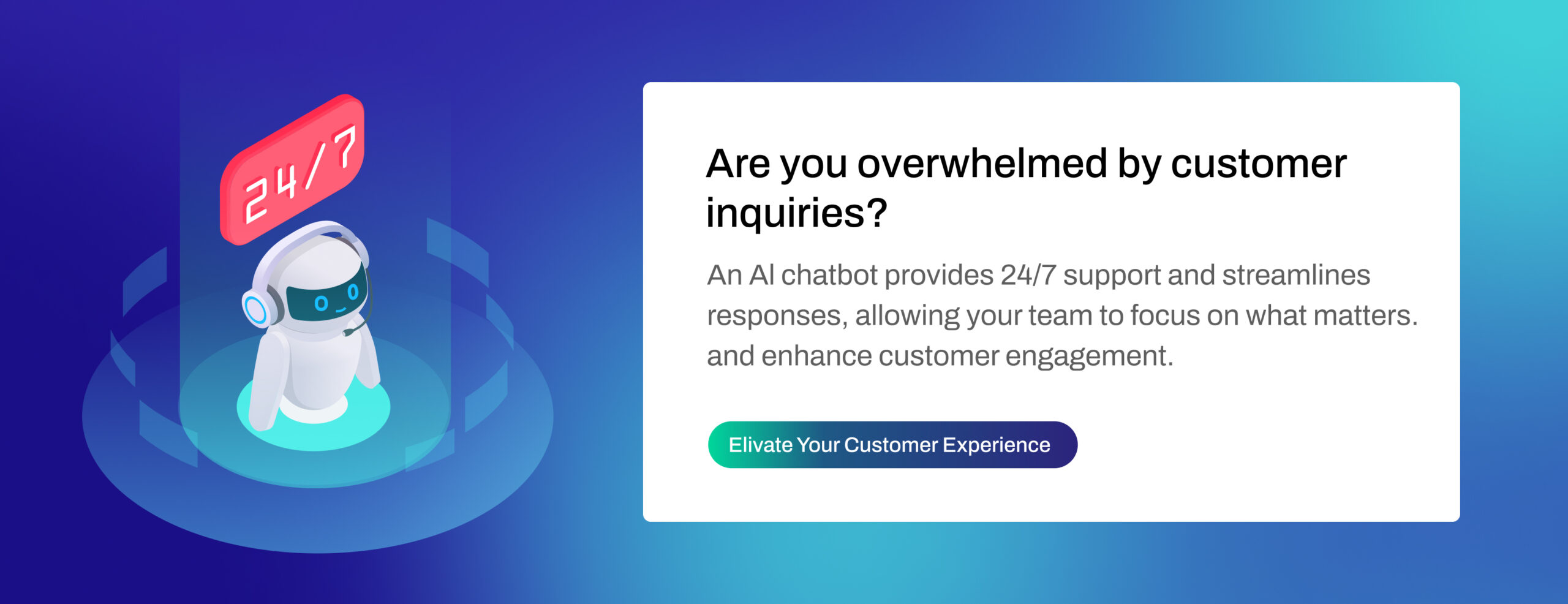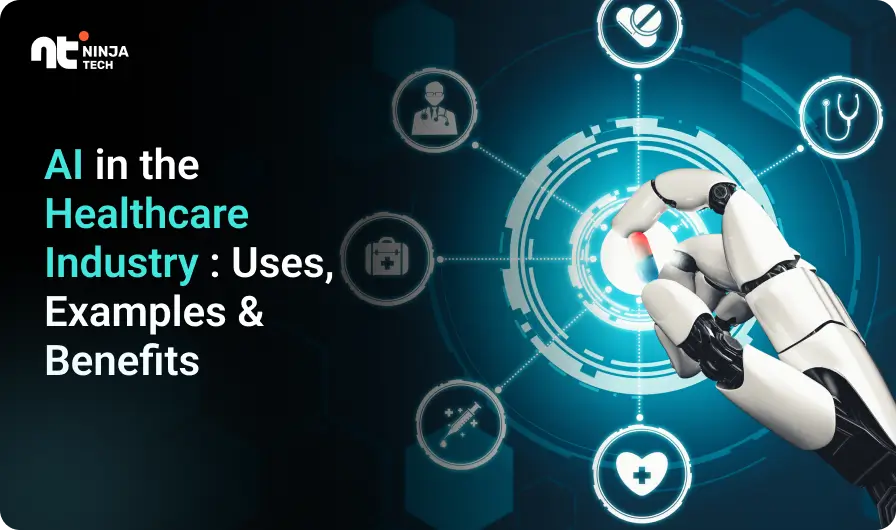How to Develop an AI Chatbot in 2025: The Ultimate Guide

Introduction
The landscape of AI chatbots is evolving faster than ever, becoming indispensable tools for businesses looking to enhance customer engagement and streamline operations. In this ultimate guide, we will walk you through a nine-step process on how to build an AI chatbot that blends cutting-edge technology with user-centered design.
Whether you are an early-stage startup or at an enterprise level, this guide will equip you with the knowledge and skills to create a chatbot that not only meets expectations but exceeds them.
AI Chatbot: An Overview
The very first question that you might have would be “What is an AI Chatbot? right? Well, then let’s start with answering it!
AI chatbots are cutting-edge software that leverages Natural Language Processing (NLP) to engage in human-like conversations. By understanding user intent, these chatbots provide contextually relevant responses and continuously improve through machine learning services according to a report by Business Insider, the global chatbot market is expected to reach $1.25 billion by 2025, highlighting its growing importance in various industries.
Unlike traditional bots, AI chatbots learn from user interactions and adapt to various scenarios, making them ideal for applications ranging from customer support to personalized recommendations. Embracing this technology can elevate your offerings and drive engagement in meaningful ways.
AI-powered Chatbots vs. Basic Chatbots
To build an AI chatbot from scratch, focus on key features that set it apart from basic bots. Unlike rule-based systems, an AI chatbot uses natural language processing for dynamic, personalized interactions, learning from user engagement to provide tailored support for complex inquiries.
Let’s explore the differences between the two types of chatbots:
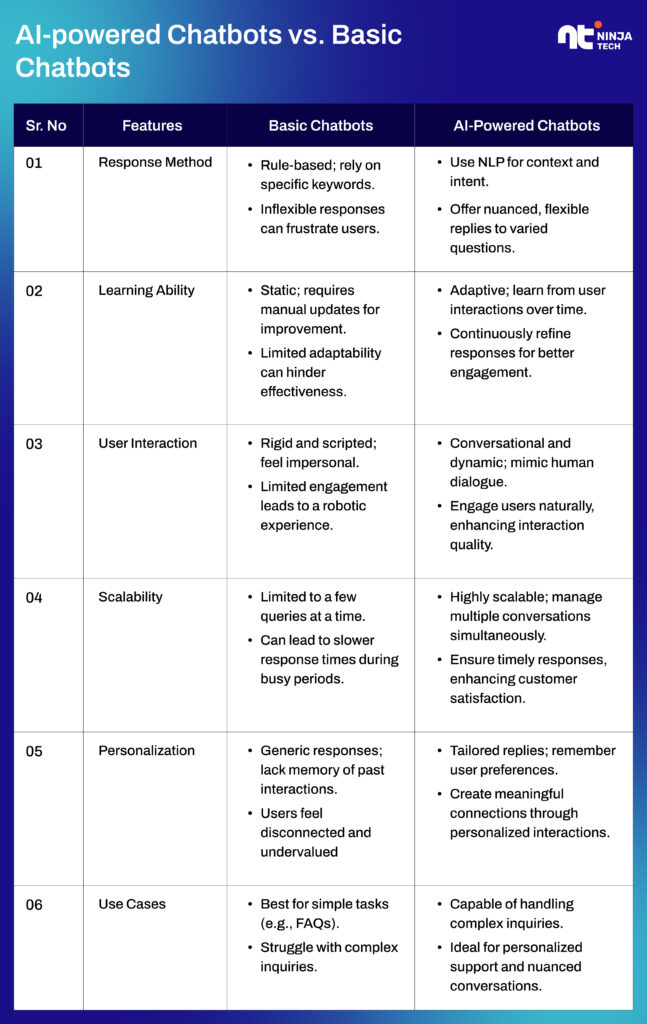
Top Reasons Your Business Needs a Chatbot: Unlocking Key Benefits
Discover how chatbots can transform your business with constant availability and enhanced customer engagement. By automating tasks and delivering valuable insights, chatbots boost efficiency and strengthen customer relationships.
Chatbots provide round-the-clock support, ensuring customer inquiries are addressed at any time of day. This capability can significantly enhance customer satisfaction by reducing wait times and allowing human agents to focus on more complex issues.
1. Enhanced Customer Engagement: Build Stronger Relationships
Chatbots engage customers in real-time, providing instant answers and personalized recommendations. If you are looking to build an AI chatbot, features like proactive messaging can deepen customer connections and enhance satisfaction.
2. Cost Efficiency: Save on Operational Expenses
By automating routine inquiries, chatbots reduce operational costs and free up resources. This efficiency allows your business to allocate resources more effectively, make significant savings, and improve your bottom line.
3. Streamlined Processes: Automate Repetitive Tasks
Chatbots automate repetitive tasks like scheduling and order tracking, improving efficiency. If you are exploring how to create an AI chatbot, focusing on this automation can enhance your team’s productivity and permit more agile responses to customer needs.
4. Valuable Insights: Data-Driven Decision Making
By analyzing customer interactions, chatbots provide valuable insights that inform your business strategies. This data-driven approach enables better decision-making and helps you understand your audience’s preferences and behaviours.
A Step-by-Step Guide to Successfully Build Your Chatbot
This guide provides the essential steps to build your chatbot from scratch, ensuring a structured and effective development process. Follow these steps to create a solution that meets your business needs and enhances user engagement.
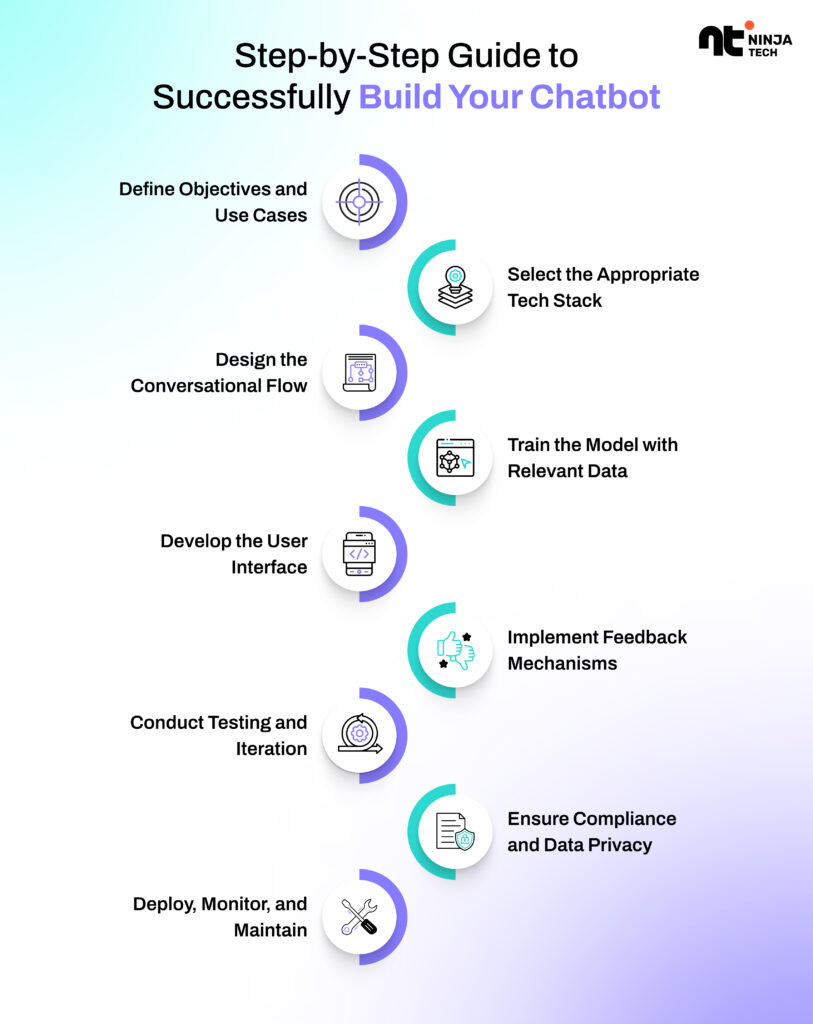
Step 1: Define Objectives and Use Cases
Clearly outline what you want your chatbot to accomplish and the specific user needs it will address.
- Identify the key problems your chatbot will solve for its users.
- Outline the main features and interactions it should offer.
Expert Advice: Create detailed user personas to ensure your objectives align with your target audience’s expectations.
Step 2: Select the Appropriate Tech Stack
Choose the right platforms and tools that will facilitate how to build an AI chatbot from scratch effectively.
- Evaluate various frameworks, APIs, and programming languages that suit your project.
- Consider integration options with existing systems and databases for seamless functionality.
Expert Advice: Opt for technologies that provide good documentation and community support to ease the development process.
Step 3: Design the Conversational Flow
Develop a clear structure for how users will interact with the chatbot, focusing on user engagement.
- Create dialogue trees that guide the conversation based on user intents and responses.
- Incorporate variations in user queries to enhance adaptability and natural interaction.
Expert Advice: Use prototyping tools to visualize the flow and iterate based on feedback before development.
Step 4: Train the Model with Relevant Data
Focus on how to create an AI chatbot by training it with specific, high-quality data relevant to your domain.
- Gather conversational data that reflects real interactions within your target area.
- Continuously fine-tune the model to improve its accuracy and relevance in responses.
Expert Advice: Regularly update your training dataset to keep the chatbot current and effective.
Step 5: Develop the User Interface
Create an intuitive and user-friendly interface that encourages interaction with your chatbot.
- Ensure the design is responsive and accessible across different devices and platforms.
- Focus on clear navigation and visual elements that enhance the user experience.
Expert Advice: Test the interface with real users to gather insights and make necessary adjustments.
Step 6: Implement Feedback Mechanisms
Establish methods for users to provide feedback, allowing the chatbot to improve continuously over time.
- Enable easy feedback options within the chatbot interface, such as ratings or comments.
- Regularly analyze chat logs to gain insights into user satisfaction and areas for improvement.
Expert Advice: Use feedback to identify common user issues and adjust responses accordingly.
Step 7: Conduct Testing and Iteration
Thoroughly test your chatbot before launch to ensure it meets expectations, focusing on how to build a chatbot that users enjoy.
- Perform both functional testing to check features and user acceptance testing for usability.
- Iterate on feedback from testers to refine the chatbot’s responses and functionalities.
Expert Advice: Involve diverse testers to cover various user scenarios and increase the robustness of the chatbot.
Step 8: Ensure Compliance and Data Privacy
Make certain that your chatbot adheres to relevant legal requirements and protects user data.
- Review regulations concerning data protection and privacy that apply to your chatbot’s operations.
- Implement security measures to safeguard user information and maintain trust.
Expert Advice: Stay updated on compliance guidelines to ensure ongoing adherence and avoid potential issues.
Step 9: Deploy, Monitor, and Maintain
Launch your chatbot and continuously monitor its performance to learn how to build an AI chatbot that stays relevant.
- Set up analytics tools to track user engagement, satisfaction, and interaction patterns.
- Plan for regular updates and improvements based on user feedback and performance metrics.
Expert Advice: Establish a schedule for reviewing chatbot performance to address any emerging issues proactively.
What Will It Cost to Create an AI Chatbot?
Building an AI chatbot from scratch can enhance your business’s customer engagement, but understanding the costs is crucial. You can begin by defining the chatbot’s purpose and features; complexity—like natural language processing or system integration—will influence development time and investment. Selecting a reliable framework is key for a smooth user experience.
Don’t forget to account for ongoing costs such as hosting and maintenance, which are vital for scalability. By partnering with skilled AI developers and strategically planning your resources, you can create a creative and reliable chatbot that meets your business needs within budget.
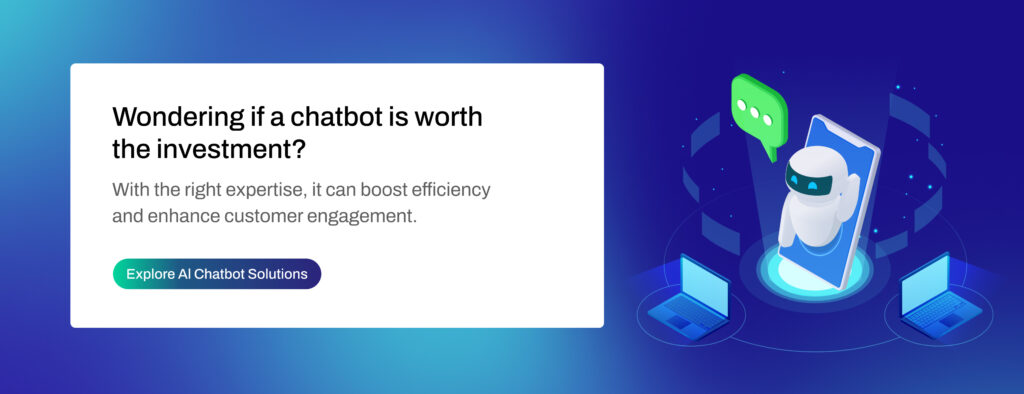
Pro Tips for Designing an Effective Chatbot
When considering how to build an AI chatbot, prioritize user experience by ensuring intuitive interactions and clear responses. Here are tips to help you create one that engages users effectively.
- Invest time in researching and mapping out user intents to ensure the chatbot can respond accurately.
- Design dialogues that mimic natural language, using casual and relatable phrases that users are likely to use.
- When necessary, offer users clear choices or buttons to guide them, making interactions straightforward and reducing frustration.
- Enable the chatbot to remember previous interactions within the same session to create a more cohesive conversational experience.
- Avoid overloading users with information; break down responses into manageable chunks to enhance understanding.
- Incorporate user data and preferences to tailor interactions, making users feel valued and understood.
- Prepare the chatbot to gracefully handle misunderstandings by providing fallback responses and guiding users back on track.
- Regularly gather user feedback and conduct testing to refine the chatbot’s responses and improve its overall performance.
How We Can Support You in Your Chatbot Journey
Our Team is dedicated to empowering businesses on their chatbot journey, providing comprehensive support from conception to deployment. Our expertise in AI technology ensures that your chatbot not only meets user expectations but also drives engagement and satisfaction.
- Customized Solutions: We tailor chatbot solutions to fit your unique business needs, ensuring alignment with your objectives and user requirements.
- Expert Consultation: Our team of experts offers guidance throughout the development process, helping you choose the right technology stack and design effective conversational flows.
- Advanced Training Techniques: We utilize cutting-edge training methods to enhance your chatbot’s performance, ensuring it understands and responds accurately to user queries.
- User Experience Design: Our design specialists focus on creating intuitive and engaging user interfaces that promote seamless interactions with your chatbot.
- Ongoing Support and Maintenance: After deployment, we provide continuous monitoring and updates, ensuring your chatbot remains relevant and effective over time.
Final Thoughts
As we wrap up our journey through the 9 steps to develop an AI chatbot in 2024, it is clear that the possibilities are limitless. By embracing AI advancements and prioritizing user experience, you can create a chatbot that resonates with your audience.
We offer comprehensive AI development services, including consulting, design, and skilled developer hiring to help bring your vision to life. Remember, success comes from continuous adaptation and revision.
So, take the plunge, innovate boldly, and let your chatbot be a vital part of your digital strategy, transforming interactions and driving your business forward. The future of conversation is in your hands!
